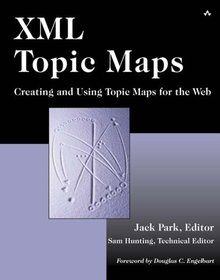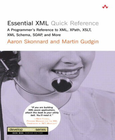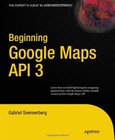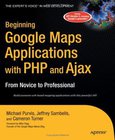XML Topic Maps
Creating and Using Topic Maps for the Web

Book Details:
| Publisher: | Addison-Wesley Professional |
| Series: | Addison Wesley , Using |
| Author: | Jack Park |
| Edition: | 1 |
| ISBN-10: | 0201749602 |
| ISBN-13: | 9780201749601 |
| Pages: | 640 |
| Published: | Jul 26 2002 |
| Posted: | Nov 19 2014 |
| Language: | English |
| Book format: | |
| Book size: | 5.99 MB |
Book Description:
XML Topic Maps (XTM) represent a powerful new tool for transforming the Web from a vast, chaotic sea of data into a highly usable information resource. XML Topic Maps is the first comprehensive, authoritative guide to this new technology. Edited by Jack Park, a leader of the XTM community, with contributions from leading members of the community, it covers every aspect of XML Topic Map creation and usage. Drawing on the XTM 1.0 standard, a complete XML grammar for interchanging Web-based Topic Maps, this book shows how XML Topic Maps can be utilized as an enabling technology for the new "Semantic Web," in which information is given well-defined meaning, making it possible for computers and people to cooperate more effectively than ever before. Coverage includes: creating, using, and extending XML Topic Maps; ontological engineering; and the use of XML Topic Maps to create next-generation knowledge representation systems and search tools. Park shows how to use Topic Maps to visualize data; how Topic Maps relate to RDF and semantic networks; and finally, how Topic Maps presage a profound paradigm shift in the way information is represented, shared, and learned on the Internet -- and everywhere else. For every Web designer, developer, and content specialist concerned with delivering and sharing information in more useful and meaningful forms.
Download Link:
Related Books:
Essential XML Quick Reference
A Programmer's Reference to XML, XPath, XSLT, XML Schema, SOAP, and More
XML and the technologies surrounding it have grown immensely in recent years -- in both use and complexity. There's more to know than any one individual can possibly remember. In Essential XML Quick Reference, two leading XML experts present an authoritative reference that covers all the XML-related technologies that matter. In one concise, accessible, example-rich guide, Aaron Skonnard and Martin Gudgin bring together critical information about XML, XSL, XSLT, schemas, namespaces, XPath, SAX, DOM, SOAP, even Microsoft's BizTalk. Following the hugely successful format pioneered by Patrick Chan's Java Almanacs, the authors provide a complete catalog of syntax references, combined with brief, to-the-point overviews of each technology and standard. This...
Beginning Google Maps API 3
This book is about the next generation of the Google Maps API. It will provide the reader with the skills and knowledge necessary to incorporate Google Maps version 3 on web pages in both desktop and mobile browsers. It also describes how to deal with common problems that most map developers encounter at some point, like performance and usability issues with having too many markers and possible solutions to that. Introduction to the Google Maps API version 3 Solutions to common problems most developers encounters (too many markers, common JavaScript pitfalls) Best practices using HTML/CSS/JavaScript and Google Maps What youll learn Building reliable Google Maps web applications How to transfer from version 2 to version 3 of the API Best practi...
Beginning Google Maps Applications with PHP and Ajax
From Novice to Professional
Until recently, building interactive web-based mapping applications has been a cumbersome affair. This changed when Google released its powerful Maps API. Beginning Google Maps Applications with PHP and Ajax was written to help you take advantage of this technology in your own endeavorswhether youre an enthusiast playing for fun or a professional building for profit. This book covers version 2 of the API, including Googles new Geocoding service. Authors Jeffrey Sambells, Cameron Turner, and Michael Purvis get rolling with examples that require hardly any code at all, but youll quickly become acquainted with many facets of the Maps API. They demonstrate powerful methods for simultaneously plotting large data sets, creating your own map overlays, and h...
2007 - 2021 © eBooks-IT.org



